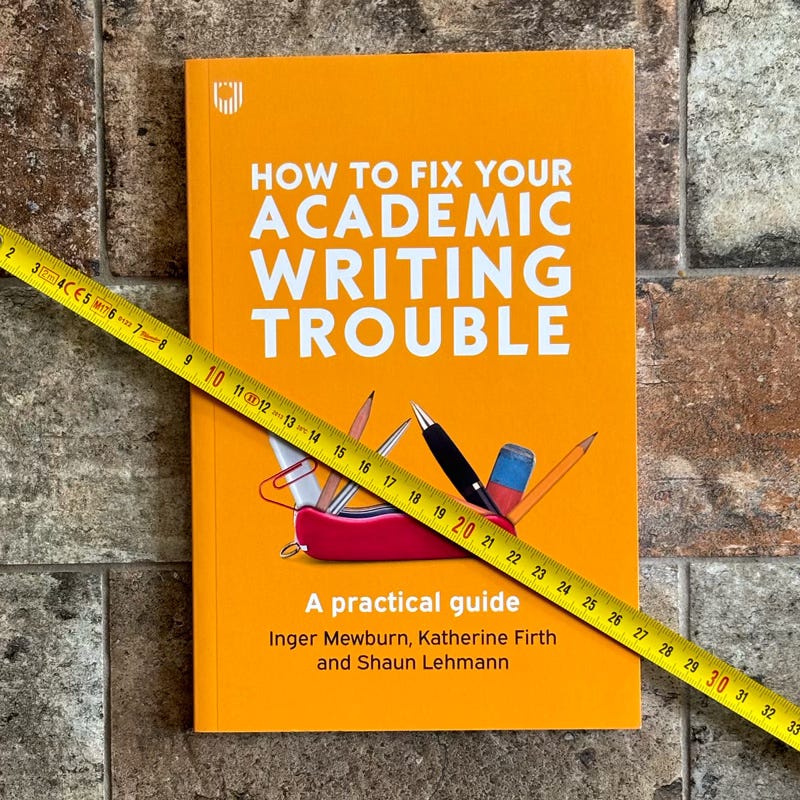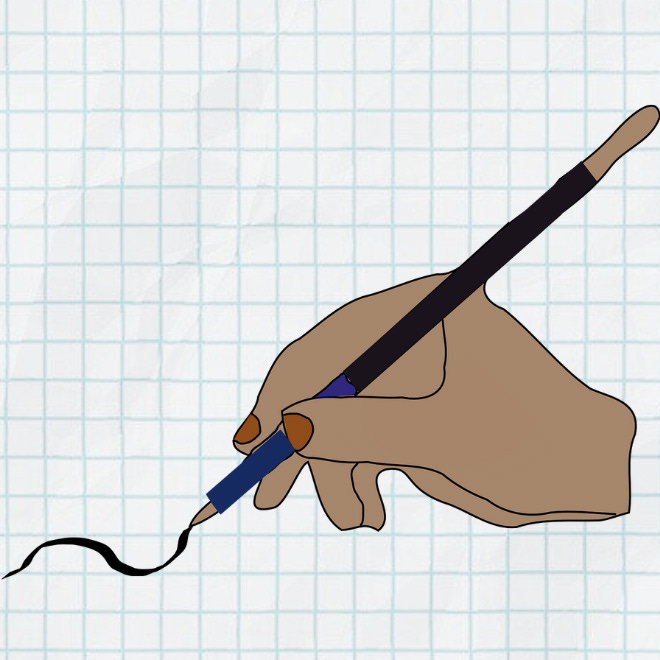There are many different ways to measure sentence length! (Photo by Helen Sword)
Academic readers can find it hard to give good feedback on sentence length.
If you are getting it wrong, they will use feedback words that recall physical motions. Students who write too many short sentences will be accused of being “choppy.” On the other hand, if your sentences are too long, you might be told you are “rambling” or “wandering.”
Alternatively, your academic reader might have their own, delightfully obscure way of telling you that the sentence length is not right. For example, I write “horsey” on sentences that are so long the reader feels like they are stuck on a run-away pony, galloping wildly about without a clear sense of direction.
I could, instead, use two precise and correct words to talk about the length of sentences: parataxis and hypotaxis.
Parataxis is like this paragraph. Plain English. It’s one sentence. Followed by another sentence. Parataxis is direct. Your sentences are short. Perhaps too short.
In this paragraph we see how hypotaxis works: the use of clause after subordinate clause, which creates sentences of deeply satisfying complexity, that, even while you might get lost a little between the commas, reassure the reader that an academic of sober-minded, careful, disposition is tapping away at the keyboard crafting very polite sentences which, because of those glorious clauses and subordinate clauses, are the horsey-est (if that’s actually a word) of all horsy sentences. You’re on safe ground with all that hypotactic fun, believe me, because it's impossible to be too enthusiastic, or too rude, about anything when you write this way. It’s no wonder since academics love being passive aggressive (which, by the way, is the avoidance of directly saying what they think) that most “serious” writing is full of it.
You might have been tempted to draw a huge breath after this last paragraph – try reading it aloud and you’ll see what I mean.
Here’s a writing exercise that can help you get a grip on sentence length:
Go into your draft and pick a paragraph. Try to make all the sentences into one or two “mega-sentences” by liberal use of commas and rephrasing. See what happens and save the result.
Next, try to “chop up” those mega sentences into a series of small sentences: as small as you can get away with.
Now assemble your sentences from shortest to longest on a page. Read them out aloud: which sentences come off your tongue easily and hit your ear well?
Rewrite the whole paragraph, using only the best sentences you made.
What have you learned about your own writing from going short and going long?
A version of this prompt appears in How to Fix Your Academic Writing Trouble: A Practical Guide, co-authored with Katherine Firth and Shaun Lehmann. For more on the topic of being a PhD student or academic in the neo-liberal precarious academy that we (kinda) love, join the nearly 70,000 other writers who subscribe to my long-running Thesis Whisperer blog.
Inger Mewburn, aka The Thesis Whisperer
For more scholarly writing inspiration, check out these resources from the curators of #AcWriMoments:
ScholarShape by Margy Thomas
WriteSPACE by Helen Sword







In poetry, parataxis doesn’t just mean short sentences; it’s a literary technique whereby
“two images or fragments, usually starkly dissimilar . . ., are juxtaposed without a clear connection. Readers are then left to make their own connections implied by the paratactic syntax” (Wikipedia). Hypotaxis, by contrast, uses lots of connecting words to make explicit associations between words and ideas. I’ve never really thought about using intentionally paratactic language in academic writing - an interesting idea!
I really appreciate being asked to go to extremes in order to find a middle that works for us. It's like we get to be a pendulum swinging back and forth until we come to rest at a balanced, even middle--whatever that looks like for our writing.